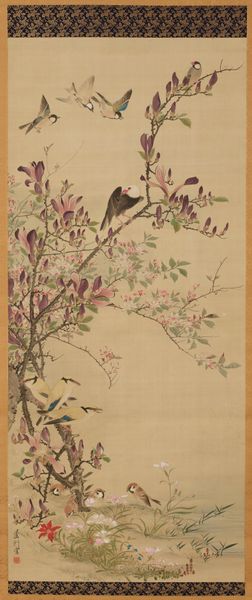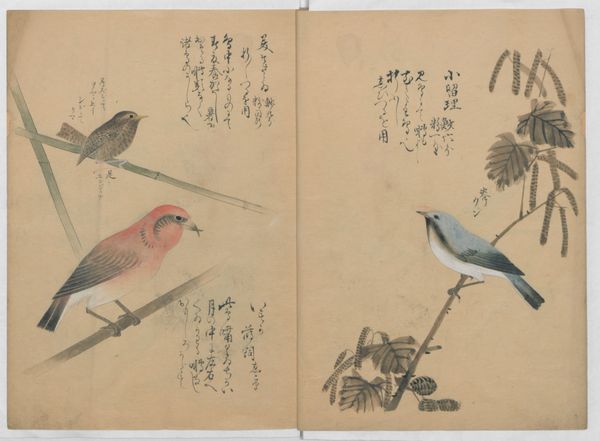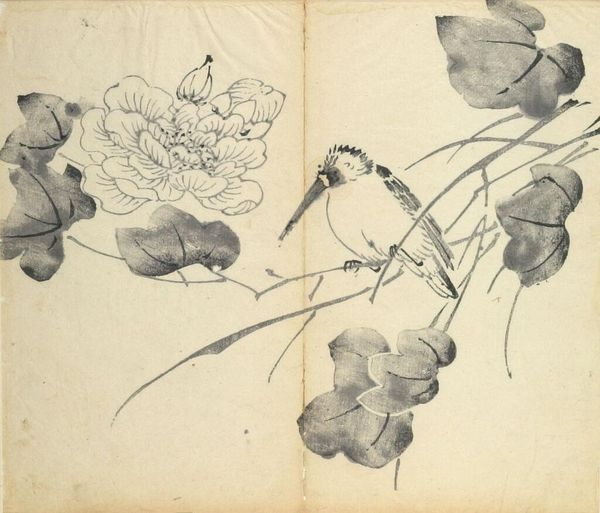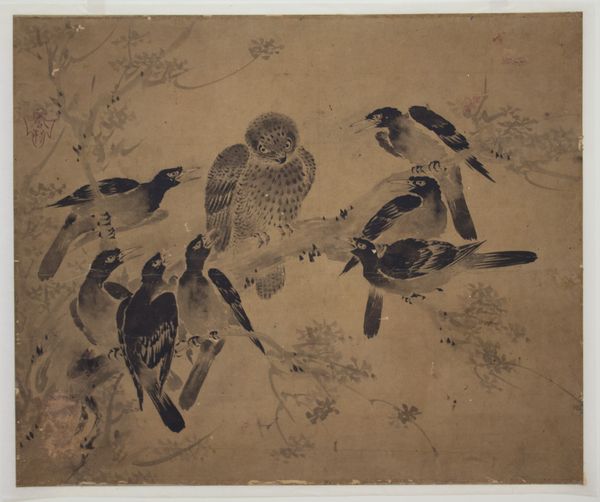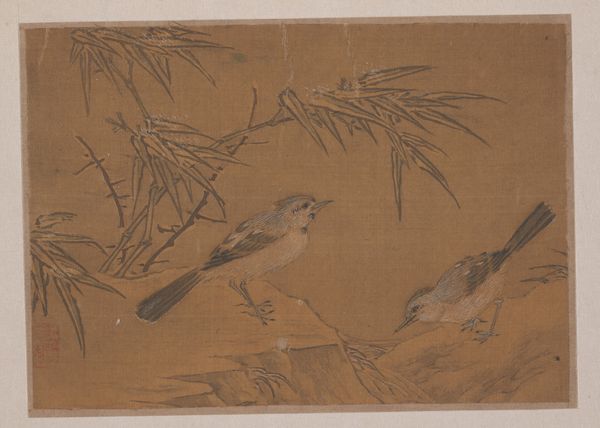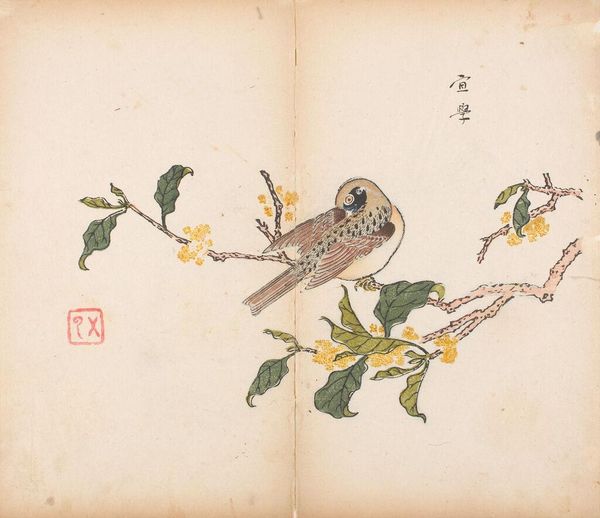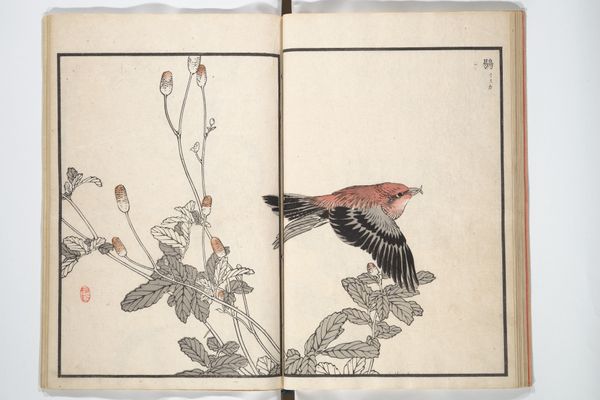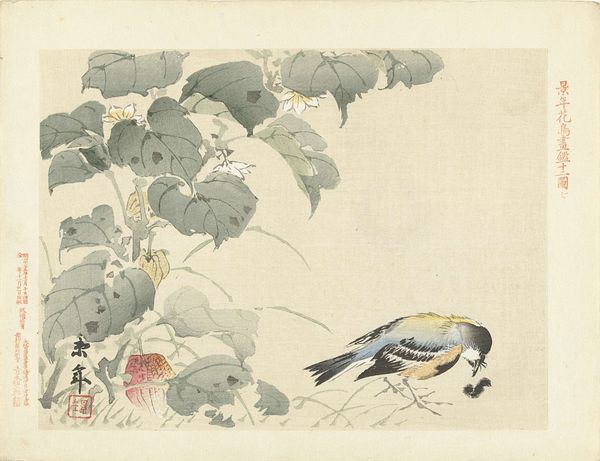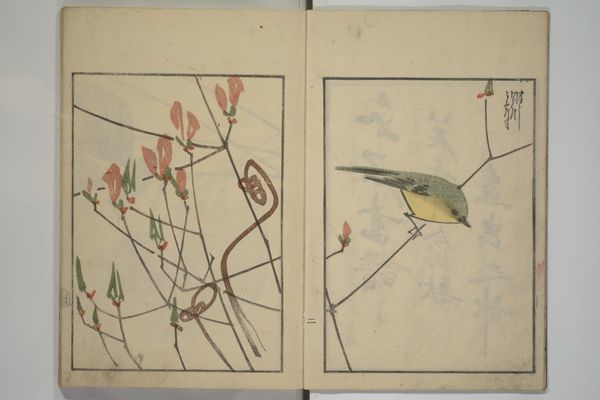
Picture Album of Birds and Flowers 1903
0:00
0:00
Dimensions: 9 13/16 × 6 3/4 in. (25 × 17.2 cm)
Copyright: Public Domain
Curator: Immediately, I’m drawn to the tranquility of this composition. There's a softness in the colours that's very soothing. Editor: I agree, it is quite beautiful. What we’re looking at is a page from Watanabe Seitei’s "Picture Album of Birds and Flowers" from 1903, currently held at the Metropolitan Museum of Art. Curator: A picture album, so this wasn’t conceived as a singular piece? I’m particularly interested in the medium, looks like watercolor and maybe colored pencils. Is this a print as well? I see subtle tonal gradations and layers, suggesting the artist wasn't only concerned with creating an image, but exploring the capabilities of his materials. Editor: Yes, it’s a colour woodblock print and painting, part of the Ukiyo-e tradition and one can consider the production within a market economy aimed at consumers of "exotic" Japanese art. The reception of such images in the West also influenced its style as orientalist in many ways. Curator: Interesting. The materials themselves offer a lot of insight to how Japanese art and craft traditions evolved under the pressure of global markets, and perhaps why impressionism was so impactful in Japan. Did Watanabe utilize specific printmaking workshops or artisanal methods common at the time? Editor: That's difficult to say without further research into his practice, but mass printmaking was certainly very popular. Think how many impressions this design must have made! However, I can tell that these "bird-and-flower pictures," or *kachō-ga,* had immense symbolic significance as signs of the seasons and representations of nature. And certainly impacted art history overall. Curator: The birds and foliage seem more illustrative, less symbolic perhaps. I find myself considering the album itself – the paper quality, the inks, how it would have been used and consumed, maybe as a display of status or education for the elite. It brings the question: how much of its value lies in its art historical symbolism and how much is derived from being a precious, manufactured object? Editor: Well, both aspects contribute, certainly. Museums often create similar consumer desire and the display of these art objects are, in turn, used to inform modern political and cultural understanding. It all boils down to an intricate dance between production, meaning, and power. Curator: That's true, I hadn't thought about its public role today as contributing to current sociopolitical meanings, as well. Editor: So, while Watanabe’s "Picture Album of Birds and Flowers" may at first seem like a peaceful, traditional artwork… Curator: It really does provoke questions about labor, consumption, and the commodification of beauty itself! Editor: Precisely! And hopefully, now, our listeners will reflect on how historical context and material creation contribute equally to an artwork’s enduring legacy.
Comments
No comments
Be the first to comment and join the conversation on the ultimate creative platform.

